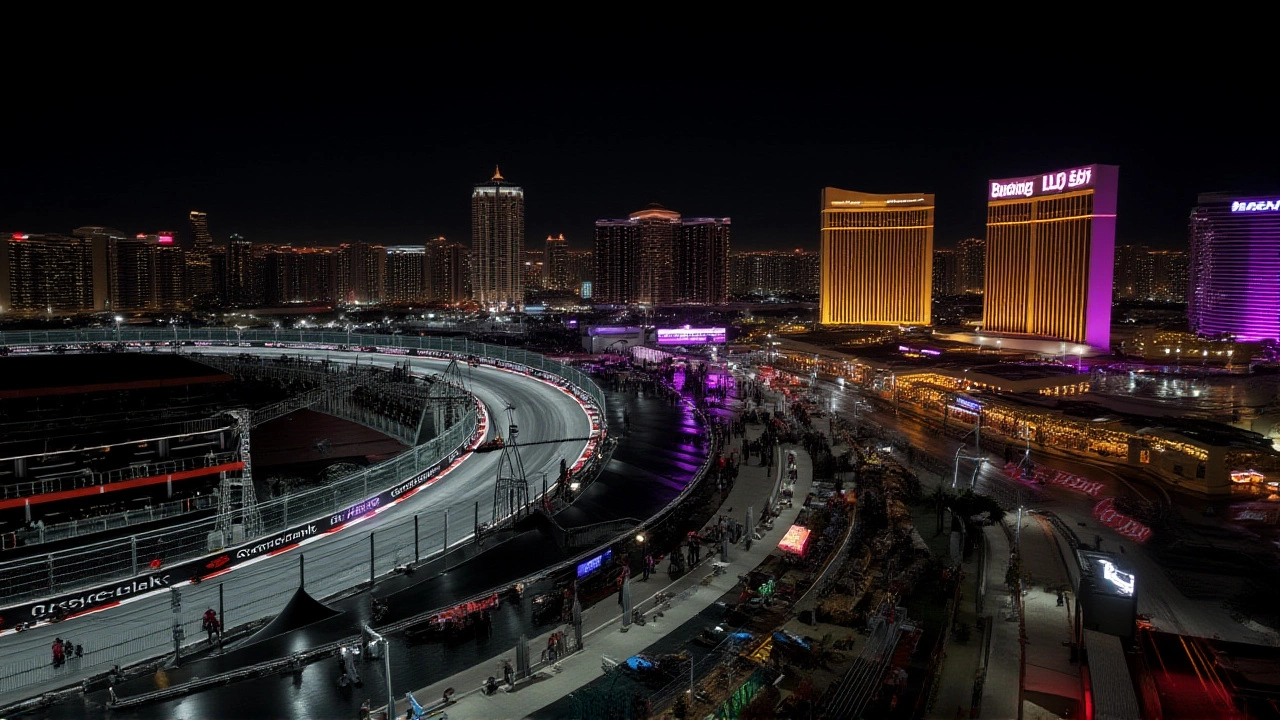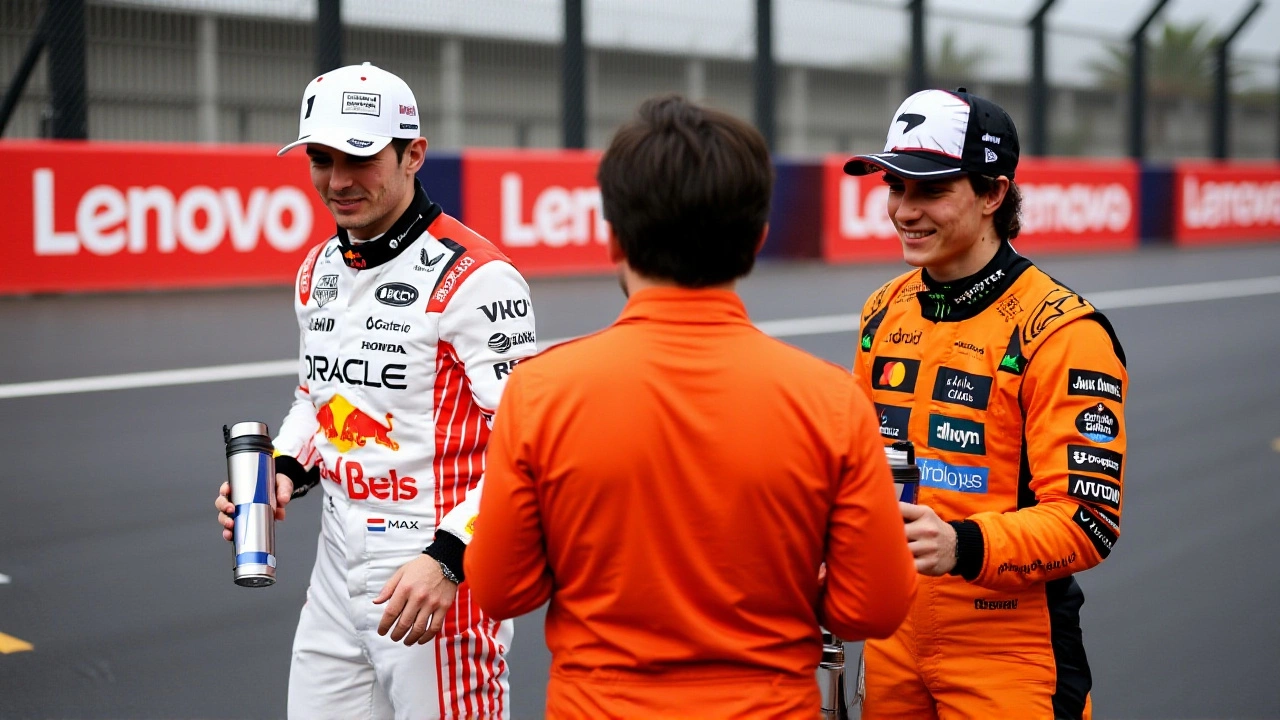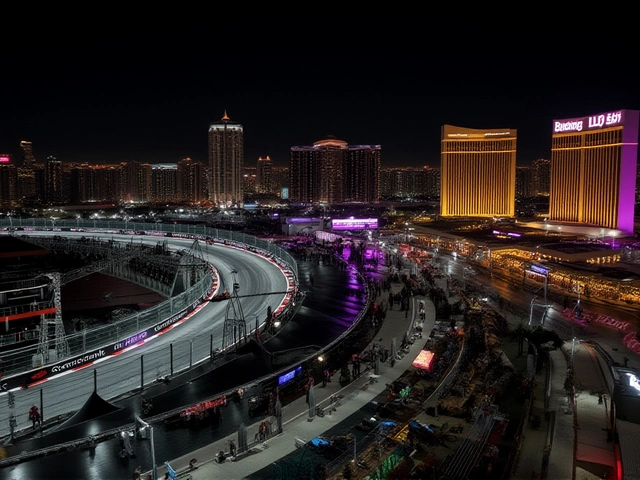Norris Wins Pole in Rain, Then Gets DQ’d as Verstappen Takes Las Vegas GP Victory

When Lando Norris crossed the line in first during qualifying for the Heineken Las Vegas Grand Prix 2025Las Vegas Strip Circuit on November 22, 2025, he didn’t just take pole — he stole the spotlight in a downpour no one saw coming. With a blistering 1:47.934, Norris edged out Max Verstappen by 0.323 seconds and Carlos Sainz Jr. by a mere 0.039 — the closest three-way finish in Las Vegas qualifying history. But here’s the twist: by race day, Norris wasn’t even on the podium. He wasn’t even in the results.
The Wet Qualifying That Broke the Record
It rained. Not a drizzle. Not a shower. A full, soaking, visibility-killing deluge that turned the Las Vegas Strip Circuit into a slick, glittering ribbon of asphalt under the neon lights. No one had ever seen a wet qualifying in this city’s F1 race — not in 2023, not in 2024. But on November 22, 2025, the skies opened, and the track became a lottery ticket. Norris, driving for McLaren Racing, nailed his final lap like a man who’d trained for this moment. Verstappen, in his Red Bull Racing RB21, came close — but not close enough. Sainz, in his Williams Racing FW47, snuck past George Russell’s Mercedes by 0.039 seconds to claim third. Russell, who’d topped Q1 and Q2 in the worst conditions, settled for fourth. And then there was Oscar Piastri — Norris’s teammate, championship rival, and the man who’d been breathing down his neck all season. Piastri qualified fifth, but only because traffic ruined his final lap. He was furious. And he had every right to be.The Race That Never Was — For McLaren
Race day, November 23, 2025, dawned dry. The track dried fast. The fans roared. Verstappen, starting second, made his move early. Norris, on pole, held firm — until lap 17, when a slight oversteer in Turn 1 cost him half a second. He didn’t panic. He didn’t crash. He just kept his head down. By lap 48, he was in second, just behind Verstappen, with Russell closing in. The finish line was in sight. Norris, for the first time in his career, was moments away from his first Grand Prix win. Then came the post-race call: both McLaren cars were disqualified. Excessive skid block wear. The FIA’s technical delegates found the underbody planks had worn beyond the 10mm legal limit — by 1.2mm on Norris’s car, 1.1mm on Piastri’s. It wasn’t a crash. It wasn’t a rule violation during the race. It was a mechanical failure they’d missed during pre-race checks. And it cost them everything.Verstappen’s Redemption, Russell’s Breakthrough
Suddenly, Verstappen — who’d finished second on track — was declared the winner. His time: 1:21:08.429. Russell, who’d finished third, became second. Kimi Antonelli, the 19-year-old Mercedes rookie, inherited third. Sainz, who’d qualified third and finished fifth on track, moved up to fifth overall. The disqualification didn’t just change the podium — it reshaped the championship. Verstappen, who trailed Norris by 49 points before the race, now sat level with Piastri at 302 points. Norris, despite being disqualified, still led with 326 — but his advantage had shrunk from 24 to 24 points over *two* drivers now. The math was brutal: 84 points remained across Qatar and Abu Dhabi. Two wins. Two podiums. One championship.
The Fallout: Apologies, Anger, and a New Championship Battle
Andrea Stella, McLaren Racing’s Team Principal, called Norris and Piastri into the garage after the results were confirmed. “I’m sorry,” he told them, voice tight. “We missed this. We should’ve seen it.” Norris, in a rare moment of vulnerability, said: “Not proud of Turn 1.” He didn’t mean the corner — he meant the wear. The team’s monitoring system had flagged low wear levels before the race. The data was wrong. The sensors failed. The team trusted them. And now, Norris’s third straight pole meant nothing. Russell, meanwhile, was stunned. “Norris had the steering problem again,” he said post-race, referencing a recurring issue in practice. But the real story wasn’t steering — it was a system that broke when it mattered most.What This Means for the Championship
This wasn’t just a race. It was a turning point. Williams Racing, long a midfield also-ran, now had its best constructor’s finish since 2017. Sainz’s fifth-place finish — boosted by the McLaren DQ — was a quiet triumph. For McLaren, the blow was seismic. Norris had been the favorite to win his first title. Now, he’s still ahead — but Verstappen and Piastri are breathing down his neck, and the margin for error is gone. The next race? The Lusail International Circuit in Doha, Qatar, on November 29, 2025. The track is faster, hotter, and harder on tires. If Norris can’t fix the wear issue, the championship might slip away — not because he lost a race, but because his car fell apart under the weight of its own expectations.
Behind the Scenes: The Skid Block Mystery
Skid blocks — those carbon-fiber plates under the car — are designed to protect the chassis and ensure cars don’t run too low. FIA rules require them to stay above 10mm. Teams monitor them obsessively. But McLaren’s sensors, calibrated for dry conditions, didn’t account for the extreme heat soak from the Las Vegas Strip’s asphalt after a wet qualifying. The combination of high downforce, abrasive track surface, and thermal stress caused accelerated wear — invisible until post-race inspection. Other teams, including Red Bull and Ferrari, were also flagged for minor wear — but none crossed the threshold. Only McLaren did. And only because their cars were the fastest, pushing the limits hardest.Frequently Asked Questions
How did Norris lose the race after winning pole?
Norris crossed the line in second place, but both McLaren cars were disqualified after post-race inspection revealed their skid blocks had worn below the 10mm legal limit — by 1.2mm on Norris’s car. The wear was caused by extreme heat and downforce on the Las Vegas Strip Circuit’s abrasive surface, compounded by a sensor failure that misled the team into thinking the wear was within limits.
Why did Verstappen win if he started second?
Verstappen finished second on track, but after Norris and Piastri were disqualified, the entire top five moved up. Verstappen inherited first place, Russell moved to second, and Antonelli took third. It was the first time in F1 history that two cars from the same team were disqualified for skid block wear after finishing 1-2 on track.
What does this mean for the Drivers’ Championship?
Norris still leads with 326 points, but Verstappen and Piastri are now tied at 302 — cutting Norris’s lead from 49 to just 24 points over two rivals. With 84 points left in Qatar and Abu Dhabi, Norris must now win both races to guarantee the title. A single DQ or mechanical failure could hand it to either Verstappen or Piastri.
Is this the first time skid block wear caused a DQ in F1?
No — skid block DQs have happened before, notably in 2017 with Red Bull and in 2021 with Mercedes. But never before has a team lost two cars from the same race due to this issue, and never in Las Vegas. The unique combination of high-speed corners, asphalt texture, and thermal stress made this case particularly rare — and devastating for McLaren.
What’s next for McLaren Racing?
McLaren has already announced a revised skid block design and new sensor calibration for Qatar. Team Principal Andrea Stella has promised a full technical review. Meanwhile, Norris and Piastri are under pressure to deliver results — but with the championship now a three-way battle, even a podium might not be enough.
Could Norris still win the title?
Absolutely — but he needs perfection. He must win in Qatar and finish at least second in Abu Dhabi. If Verstappen wins both, he overtakes Norris. If Piastri wins one and finishes on the podium in the other, he ties Norris. The pressure is now on Norris to not just drive fast — but to manage every component, every lap, every tire, without a single misstep.
